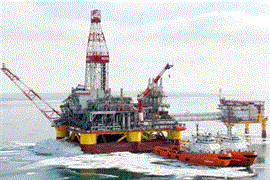Brazilian opportunities
09 November 2010

The Brazilian government’s Growth Acceleration Programme in conjunction with the country’s winning bids to host both the 2014 FIFA Football World Cup and the 2016 Olympic Games make Brazil one of the most attractive markets in Latin America. Steve Skinner reports.
Independent infrastructure and industrial association Associação Brasileira da Infraestrutura e Indústrias de Base (ABDIB) predicts that Brazil will need to invest over BRL 800 billion (US$ 452 billion) in the next five years to be ready for the 2014 FIFA Football World Cup and the 2016 Olympic Games.
ABDIB Chairman, Paulo Godoy said, "Brazil is fully qualified to host the two tournaments. Projects with long-term economic and financial feasibility will be attractive to the private sector, as they will leave a legacy of growth and development for Brazilian society. Meeting the construction demands of the two tournaments will be a challenge, but also a unique opportunity for Brazil."
Last month, Brazilian Development Minister, Miguel Jorge said the country would invest BRL 1.3 trillion (US$ 735 billion) in the infrastructure, industry and construction sectors over the next three years. "We have macroeconomic, political and institutional stability. We have quickly overcome the effects of the international financial crisis and have returned to a path of sustainable growth," he said.
Mr Jorge said that BRL 845 billion (US$ 477 billion) would be invested in infrastructure, BRL 457 billion (US$ 258 billion) in construction and BRL 177 billion (US$ 100 billion) in projects for the two major sporting contests.
"Our economy is expected to grow by +6% to +6.5% during 2010, which makes this a great time to invest in Brazil," he said.
President of Volvo Construction Equipment in Latin America, Yoshio Kawakami said, "The two global sports events are expected to influence the country's GDP with a +0.9% growth each year from 2011 to 2017. I am therefore extremely confident about the future growth of the construction sector and our business in Brazil."
2014 and beyond
Beyond the World Cup and Olympics Mr Kawakami credits much of the buoyancy in Brazil's construction market to the Government's Growth Acceleration Programme (PAC), which has a budget of approximately BRL 16 billion (US$ 9 billion). The programme has several priority sectors including energy, logistics and transport, and housing.
In the energy sector alone, Sobratema - the Brazilian Association of Technology for Equipment and maintenance - said the programme is responsible for funding the Jirau and Santo Antônio hydroelectric power plants on the Madeira River in the Rondônia region producing 3300 MW and 3150 MW respectively.
The Santo Antônio project, with a construction value of BRL 12.2 billion (US$ 5.3 billion) is scheduled to be completed by contractor Odebrecht in 2015, although the company expects the first of the 44 turbines to start generating power as early as the end of 2011.
Energy from the plant will supply the needs of 11 million people and will be distributed to northern Brazil and other regions via a transmission line that will connect Porto Velho with Araraquara and São Paulo.
One of Brazil's most controversial hydroelectric projects will see the construction of a dam across the Xingu River in Brazil's Amazon basin. The concession for the BRL 20 billion (US$ 11.3 billion) Belo Monte hydroelectric dam and power plant was awarded to the Norte Energia consortium led by state-controlled Companhia Hidro Electrica do Sao Francisco in April, but only after various court actions regarding the environmental impact of the project.
Brazilian President Luiz Inacio Lula da Silva has countered protesters by saying that the dam is essential and will provide clean and renewable energy to fuel the country's growing economy.
PAC investment continues
According to Nelson Costabile of Sobratema The second phase of the PAC programme, announced in March this year, will see BRL 8.6 billion (US$ 4.8 billion) allocated to alternative energy such as the production of ethanol from sugar cane and nuclear power. The later includes construction of the Angra III nuclear power plant on the coast of Rio de Janeiro with a 1.35 GW capacity, which is scheduled for completion in 2014 at a cost of BRL 7 billion (US$ 3.9 billion).
Infrastructure too will see extra investment through to 2014 with BRL 48.4 billion (US$ 27.2 billion) allocated by the programme to highways. This will include the construction or upgrade of 7917 km of roads as well as the maintenance of a further 55000 km.
The single largest road project is the BRL 15 billion (US$ 8.4 billion) São Paulo Beltway project. The first 32 km long western section of the 170 km long ring road was opened in 2002, with the 61 km long southern section opened in March this year. Construction of the 45 km long eastern section is due to commence this year, while the 44 km long northern section is scheduled for completion in 2014.
Rail will benefit from BRL 43.9 billion (US$ 24.7 billion) of investment for the construction of 1991 km of high speed rail network and the addition of 4696 km of conventional rail. The high speed network will include the 412 km long São Paulo to Rio de Janeiro high speed link needed to connect the country's two main cities, which it is hoped will open in late 2016.
In May the World Bank approved a US$ 130 million loan to support the second phase of the São Paulo Metro Line 4 (yellow) in the Brazilian capital. The project, which aims to help the city improve its public transport network, ease congestion and protect the environment, will link key employment and service areas of the city and reduce travel times.
Once the second phase is completed in 2013, Line 4 is expected to increase passenger numbers on the São Paulo Metro by over one million per day, to a total of 4.8 million.
Drivers
Across Latin America investment in infrastructure averages just 1.5% of GDP which equates to US$ 45 billion according to director of international sales for Latin America at Roadtec, Paul Lavaud. He told iC, "Latin American governments understand that investment in infrastructure is necessary to be more competitive in the global market and to connect more cities to economic activity.
"One of the solutions to obtain funds for new investment is private concessions. In this respect, Brazil, Chile, Colombia and Peru lead the region regarding the attractiveness of their private investment-climate for infrastructure," he said.
Doka spokesman Harald Bachinger told iC that government, Development Bank and PPP financing are also being used to fund construction activity across the region. "Brazil is by far the strongest market in Latin America but other markets in the region are developing well and show future revenue potential," he said.
According to Mr Bachinger, Brazil is strong in both civil engineering projects and building construction, while the driver in Chile is building construction, although the big mining companies in the north of the country are generating business in civil engineering. Construction in Mexico and Panama is also being driven by building, although both governments have announced increased spending for infrastructure projects.
"Overall, the continent's economy is one of the fastest growing in the world, so the outlook remains extremely positive," he said.
Local production
Caterpillar and JCB are both investing in local production to satisfy the regional growth in demand for construction equipment.
As JCB's latest production line for excavators comes on line in Brazil, Caterpillar is selecting a site on which to build a new manufacturing facility for backhoe loaders and small wheeled loaders.
The first JCB JS200LC tracked excavator has just rolled off the production line at the company's newest factory in Sorocaba, Brazil, built next to the company's existing backhoe loader factory. When the facility is at full production, it will have the capacity to produce hundreds of excavators each year.
Regional director in Latin America, Carlos Hernandez said, "The Latin American region is undergoing strong growth this year and our decision to constantly invest in the expansion of production capability will help us achieve our objective of maintaining business growth and increasing our market share in the region."
Speaking of Caterpillar's expansion in Latin America, Caterpillar Brazil president Luiz Carlos Calil said, "The strategic decision to expand our operations in Brazil will position Caterpillar to meet customer demand, particularly considering the strong economic recovery that has taken place across the region in the last year."
Construction of the new facility is expected to begin in late 2010 or early 2011, pending final site approvals.
Outlook
While the World Cup and Olympics in Brazil will drive activity in the coming years, natural resources could have a longer-term positive effect on construction in the future.
ABDIB's Paulo Godoy said, "The oil and gas segment promises to increase investments in infrastructure because of the exploitation of oil reserves beneath the salt layer. There is an expectation of economic growth and it generates a demand for more investments, particularly in power and transportation."


